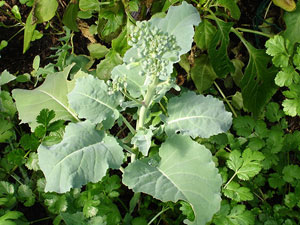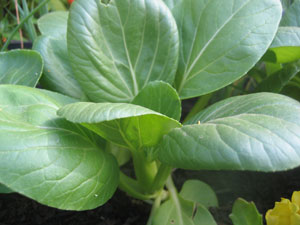
Be it pak choi, bok choi, Chinese cabbage, tatsoi or kailon (Chinese broccoli), everyone has a favourite Asian green. Easy and quick to grow, Asian greens should be in every Yummy Yard. Choi to the world… it’s time to plant some Asian Greens! Wok On!
Position, Position, Position!
Asian greens all love full sun, except in parts of Australia with very hot summers. In these hot spots, part shade is fine, so consider using some other plants, like beans and sweet corn, as ‘living shade’. Or erect a shade tent.
Talking Dirty
A patch full of organic matter, like compost or well-rotted manure, will see these guys get a fine start in life. When preparing the patch, remove any large stones to prevent misshapen greens! A free draining soil is ideal, so try for a one part compost to three parts soil for happy Asian greens! Leave about 20cm between each plant.
Feed Me!
Asian greens are best grown quickly for great flavour. So, in addition to a well prepared soil, a half strength manure/compost tea fortnightly is ideal. Seaweed solution at planting time will ensure good root development.
What about the Water?
Asian greens have shallow roots and will need frequent watering, especially in hot and/or windy weather. Keep area well-mulched and test soil moisture regularly. Subsurface irrigation will work best for all greens, so consider a system.

Pests and the Rest
They’re creepy and they’re kooky, but they’re not the Addams family. They’re snails, and they are the biggest pest of Asian Greens (as are slugs to a lesser extent). Deter these little munching machines before they eat all your super stir-fry stuff! My suggestion is coffee grounds spread around your patch – a perfect solution as I love coffee and snails hate it! Failing that, set up a beer trap… this is NOT my preferred solution, as I love beer way too much to give it to the snails. It does work though, as do all the other tips in our snails factsheet.
Are We There Yet?
This varies dependant on the variety of Asian green, but, as a guide, pak and bok choi are ready to harvest at around eight weeks, as are tatsoi. These three can have their outer leaves harvested throughout the growing period, from about six weeks onwards. Kailon may take a little longer and depending on the weather, can be harvested between 10-12 weeks. Chinese cabbage should be treated the same as other cabbage varieties, and is generally ready for harvesting from 12 weeks onwards.
Hot Tip
Try growing Asian greens from organic seed. There are heaps of varieties available and by sowing just a few seeds at a time, your growing period can be spread out by months, which means a better looking patch and more food.
Companion Planting
Suitable Companions: Beans, beetroot, cabbage, carrots, cucumber, marjoram, peas and strawberries.
Unsuitable Companions: Parsley.
Related Articles:
Garden Journaling – Slow down to tune in.
As we move through the year and our gardens evolve, there's something magical about documenting the journey. Garden journaling is an art that enables…
The Importance of building soil health for a biodeverse, productive garden
Creating a thriving garden that not only sustains itself but also contributes to the broader ecosystem requires more than just sunlight and water.…




